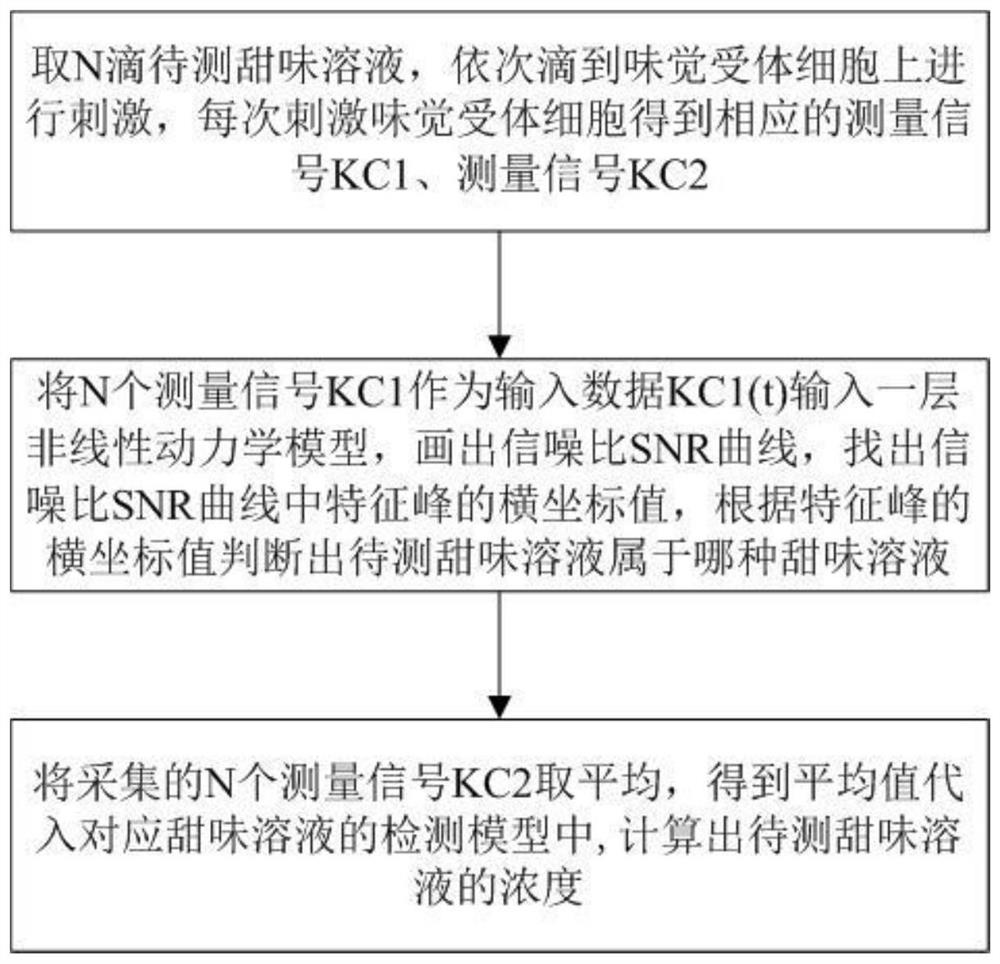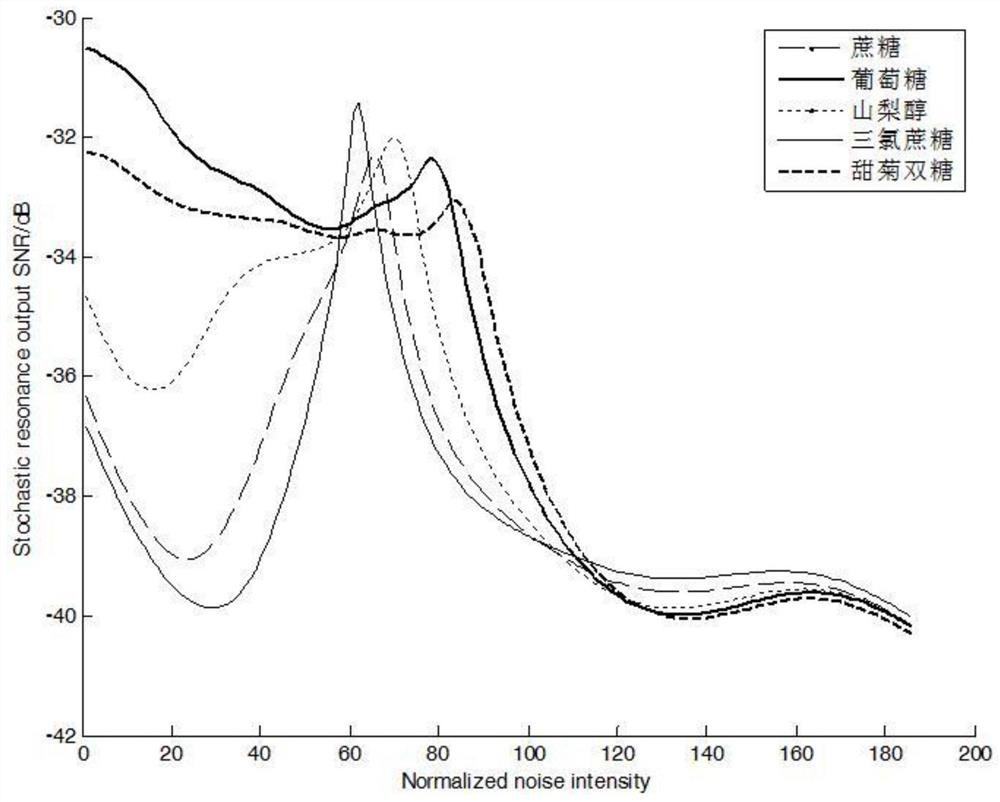A sweet solution detection method based on cell image recognition
A detection method and image recognition technology, applied in the field of sweet solution detection based on cell image recognition, can solve the problems of repeatability limitations, repeatability and accuracy limitations, inconvenient operation of instruments, etc., to eliminate interference factors , reduce interference, and detect time-effective effects
- Summary
- Abstract
- Description
- Claims
- Application Information
AI Technical Summary
Problems solved by technology
Method used
Image
Examples
Embodiment
[0056] Embodiment: A kind of sweet solution detection method based on cell image recognition of this embodiment, such as figure 1 shown, including the following steps:
[0057] S1: Take N drops of the sweet solution to be tested, and drop them on the taste receptor cells in turn for stimulation, and each time the taste receptor cells are stimulated to obtain the corresponding measurement signal KC1 and measurement signal KC2;
[0058] The methods for collecting the measurement signal KC1 and the measurement signal KC2 after each time the sweet taste solution to be tested is dropped onto the taste receptor cells are as follows:
[0059] S11: Extract the cell area A′, cell perimeter PS, cell eccentricity ECR, cell roundness RCR of taste receptor cells, and calculate cell morphological characteristic factors
[0060] Area A'=∑f(x, y), that is, count the number of pixels that satisfy the condition f(x, y)=1;
[0061] The perimeter PS: is the sum of all pixels occupied by the c...
PUM
 Login to View More
Login to View More Abstract
Description
Claims
Application Information
 Login to View More
Login to View More - R&D
- Intellectual Property
- Life Sciences
- Materials
- Tech Scout
- Unparalleled Data Quality
- Higher Quality Content
- 60% Fewer Hallucinations
Browse by: Latest US Patents, China's latest patents, Technical Efficacy Thesaurus, Application Domain, Technology Topic, Popular Technical Reports.
© 2025 PatSnap. All rights reserved.Legal|Privacy policy|Modern Slavery Act Transparency Statement|Sitemap|About US| Contact US: help@patsnap.com



